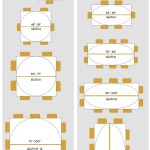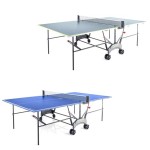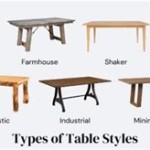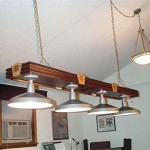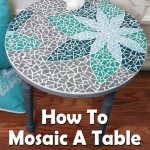The Enduring Appeal of the Mission Style Coffee Table
The Mission style coffee table, a staple of American furniture design, embodies simplicity, functionality, and craftsmanship. Originating in the late 19th and early 20th centuries as part of the broader Arts and Crafts movement, it offers a timeless aesthetic that seamlessly integrates into various interior design schemes. Its defining characteristics, including straight lines, sturdy construction, and exposed joinery, contribute to its enduring popularity, appealing to those who appreciate both classic design and durable, well-made furnishings.
The Arts and Crafts movement, from which the Mission style emerged, was a reaction against the ornate and mass-produced furniture of the Victorian era. Proponents of Arts and Crafts, such as Gustav Stickley, sought to revive traditional craftsmanship, emphasizing quality materials, honest construction, and functional design. The Mission style coffee table, with its unadorned surfaces and robust build, perfectly encapsulates these principles. Understanding its historical context is critical to appreciating its unique design and lasting significance.
One of the primary reasons for the Mission style coffee table's enduring appeal is its versatility. While it is often associated with craftsman bungalows and rustic interiors, its clean lines and simple form allow it to blend harmoniously with modern, minimalist, and even eclectic decor. The use of natural materials, typically oak or other hardwoods, ensures that it complements a wide range of color palettes and textures, making it a flexible design element for any living space.
Key Features Defining the Mission Style Coffee Table
Several distinct characteristics set the Mission style coffee table apart from other furniture designs. These features are not merely aesthetic choices but integral components that contribute to its structural integrity and visual appeal.
Firstly, the emphasis on straight lines and right angles is paramount. Curved or ornamental details are virtually absent, replaced by a focus on geometrical simplicity. This rectilinear form lends the coffee table a sense of stability and order, making it a visually grounding element in a room. The clean lines also contribute to its timelessness, ensuring that it remains relevant across changing design trends.
Secondly, the sturdy construction is a hallmark of the Mission style. These coffee tables are typically built from solid hardwoods, such as oak, and feature robust joinery techniques, such as mortise and tenon joints. This type of construction ensures that the table is not only durable but also capable of withstanding the wear and tear of daily use. The exposed joinery, often highlighted with wooden pegs or metal hardware, serves as a decorative element, showcasing the craftsmanship involved in its creation.
Thirdly, the use of natural materials is essential to the Mission style aesthetic. Oak is the most common wood used in the construction of these coffee tables, prized for its strength, durability, and distinctive grain pattern. Other hardwoods, such as cherry or maple, may also be used, depending on the desired color and texture. The wood is typically finished with a clear or lightly stained finish that allows the natural beauty of the grain to shine through. This emphasis on natural materials connects the coffee table to the Arts and Crafts movement's commitment to authenticity and handcrafted goods.
Materials Commonly Used in Mission Style Coffee Tables
The choice of materials plays a crucial role in defining the character and quality of a Mission style coffee table. The type of wood, the hardware, and the finish all contribute to its overall aesthetic and durability.
As previously mentioned, oak is the most prevalent wood used in Mission style coffee tables. Its strength, durability, and readily available supply made it a popular choice for furniture makers during the Arts and Crafts era. The distinctive grain pattern of oak, often quarter-sawn to enhance its stability and visual appeal, adds to the table's character. Quarter-sawing is a specific method of cutting the wood that results in tighter grain patterns and increased resistance to warping.
While oak is the most common, other hardwoods, such as cherry, maple, or even less common woods like walnut, can also be incorporated. Cherry offers a rich, reddish-brown hue that deepens over time, while maple provides a lighter, more uniform color. Walnut, with its darker tones and intricate grain patterns, adds a touch of sophistication. The choice of wood depends on the desired aesthetic and the overall design scheme of the room in which the coffee table will be placed.
The hardware used on Mission style coffee tables is typically simple and functional, reflecting the overall design philosophy. Brass or iron hardware, often with a hammered or antiqued finish, is commonly used for hinges, pulls, and decorative accents. These materials complement the natural wood and add to the table's rustic charm. The hardware is typically exposed, reinforcing the emphasis on honest construction and highlighting the craftsmanship involved in its creation.
The finish applied to a Mission style coffee table is designed to protect the wood while enhancing its natural beauty. Clear finishes, such as varnish or lacquer, are often used to allow the grain pattern to remain visible. Stains, typically in warm, earthy tones, may also be applied to deepen the color of the wood or to create a specific aesthetic effect. The finish is usually matte or semi-gloss, avoiding the highly polished look that is characteristic of more ornate furniture styles.
Integrating a Mission Style Coffee Table into Modern Interiors
Despite its historical roots, the Mission style coffee table can be seamlessly integrated into a variety of modern interior design schemes. Its simple lines and natural materials make it a versatile piece that can complement a wide range of styles, from minimalist to contemporary to even more eclectic designs.
In a minimalist setting, a Mission style coffee table can provide a grounding element, adding warmth and texture to a space that might otherwise feel stark or sterile. Its sturdy construction and natural wood grain contrast nicely with the clean lines and simple forms that are characteristic of minimalist design. The table can serve as a focal point, drawing the eye and adding a touch of organic beauty to the room.
In a contemporary setting, a Mission style coffee table can be used to create a sense of balance and contrast. Its rustic charm and handcrafted feel can be offset by sleek, modern furniture and accessories. The use of natural materials can also help to soften the hard edges and artificial surfaces that are often found in contemporary interiors. Pairing a Mission style coffee table with a modern sofa or armchairs can create a visually interesting and inviting living space.
Even in more eclectic interiors, a Mission style coffee table can find its place. Its simple design and natural materials allow it to blend seamlessly with a variety of colors, textures, and patterns. The table can serve as a neutral anchor, providing a sense of stability and order amidst a more chaotic mix of styles. Its timeless appeal ensures that it will remain a relevant and stylish addition to the room, regardless of changing trends.
Ultimately, the enduring appeal of the Mission style coffee table lies in its combination of simplicity, functionality, and craftsmanship. Its clean lines, sturdy construction, and use of natural materials make it a timeless piece that can be enjoyed for generations to come. Whether placed in a craftsman bungalow, a modern apartment, or an eclectic living room, it will add a touch of warmth, character, and rustic charm to any space.

Classic Mission Rectangular Coffee Table With Lift Top From

Prairie Mission Rectangular Coffee Table From Dutchcrafters Amish
Oak Hardwood Mission Style Coffee Table

Prairie Mission Coffee Table Barn Furniture

Learn Woodworking Tips With Rockler

Craftsman Style Coffee Table Arts And Crafts Furniture Mission

American Mission Square Coffee Table

Mission Coffee Table Walnut Afi Target

Mission Style Arts Crafts Solid Quarter Sawn Oak Coffee Table Crafters And Weavers

Leick Home Mission Impeccable 48 In L X 24 D Medium Oak Rectangle Wood Coffee Table With 2 Drawers And Shelf 8204 The Depot
Related Posts

